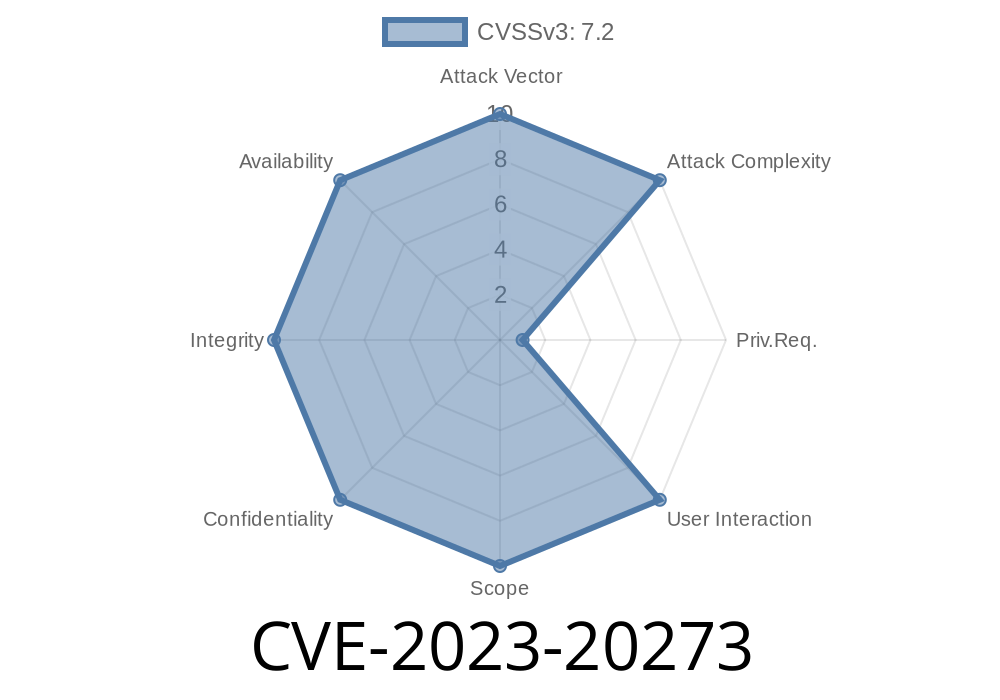A recently discovered vulnerability (CVE-2023-20273) in the web UI feature of Cisco IOS XE Software can potentially allow an authenticated, remote attacker to inject commands with root privileges. This security flaw is a result of insufficient input validation in the code. Let's delve deeper into the details of this vulnerability, the impact it carries, and how it can be effectively exploited by attackers.
Vulnerability Explanation
The command injection vulnerability we're discussing concerns the web user interface (UI) feature of Cisco IOS XE Software. For those unaware, Cisco IOS XE is an operating system with advanced features and capabilities, designed for various Cisco routers and switches. The main issue originates from the fact that insufficient input validation has been implemented in the code, allowing an attacker to inject commands with the privileges of the root user.
To exploit this vulnerability, a remote attacker would need to send crafted input (such as a specifically formulated HTTP request) to the web UI. The web UI doesn't validate the input accurately and thus, executes the attacker's injected command. If this exploit is successful, an attacker can run any command on the underlying operating system with root privileges, resulting in potential severe damage or data loss.
Code Snippet
The following code snippet demonstrates an example of how an attacker may craft input to exploit this vulnerability. (Note: This is just an example, and actual code may vary):
# Send a crafted HTTP request to the Cisco IOS XE web UI
# Replace <target> with the target router's IP, and <attacker_payload> with the malicious command
curl -X POST "https://<target>/web_ui_api"; -H "Content-Type: application/json;charset=UTF-8" --data '{"type": "command", "payload": "<attacker_payload>"}'
Important Links/References
- Cisco Advisory on CVE-2023-20273
- NVD entry for CVE-2023-20273
- Cisco IOS XE documentation
Summary
This deep dive into the CVE-2023-20273 vulnerability should help you better understand the potential security threat posed by the web UI feature of Cisco IOS XE Software. To exploit this serious vulnerability, an attacker would need to craft input (such as an HTTP request) and send it to the targeted system. Although these types of attacks may seem complex, they're increasingly becoming common in today's security landscape. Therefore, it's crucial to keep yourself updated on the latest security vulnerabilities, apply necessary patches, and maintain a robust defense strategy.
Timeline
Published on: 10/25/2023 18:17:00 UTC
Last modified on: 10/31/2023 14:02:00 UTC
